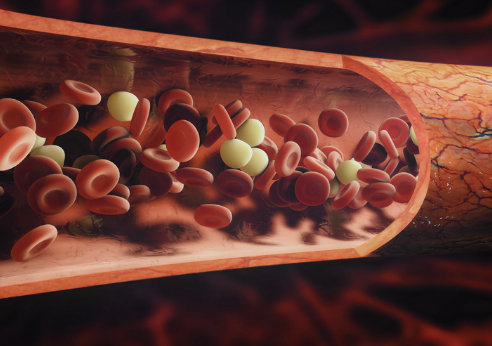Red blood cells contain a protein that carries oxygen throughout the body, moves carbon dioxide into the lungs out of the cell, and aids in exhalation known as Hemoglobin. A low level of hemoglobin level leads to the failure of these functions. Iron is the mineral that works to make and regulate hemoglobin formation. Transferrin that binds with iron is a protein that moves the iron throughout the body, so the body makes RBCs that have Hemoglobin. B vitamin and Folate also make heme, a part of RBCs with Hemoglobin and folate needed to mature the RBCs. This can cause folate deficiency anemia and, ultimately, low Hb.
Common causes of low Hemoglobin in elders
Anemia is common among older people, and the prevalence of anemia increases with age. According to WHO, among 85-year-old age people, anemia is common among men, and among older people, the range is 8-44%.
The primary causes are
* Poor dietary intake of iron, folate, or B12-rich foods causes megaloblastic, iron deficiency, or pernicious anemia
* Bone marrow failure syndrome
* Chronic renal diseases
* Inflammatory diseases
* GIT blood loss
* Hemolysis
* Subacute endocarditis
* Hepatic disease
* Malignancy
* Myelodysplastic syndrome
Symptoms
* Irregular heartbeat
* Tiredness
* Headache
* Bruising that is unexplained
* Dyspnea/ shortness of breath
* Pale skin color
* Pain in chest
* Pulsatile tinnitus (a swooshing sound comes in one ear)
* Arrhythmia
* Dizziness
Ranges for Hemoglobin:
The average level of HB
* For men :14-17.5mg/dl
* For women: 12.3-15.3mg/dl
5 Tips to overcome low Hb:
1. Consume a balanced diet that contains
* Iron-rich foods are Beans, lentils, tofu, oats, dry fruits such as raisins, sweet potatoes, spinach, cabbage, Kale, lean meat, iron-fortified bread, rice, nuts, seeds, and cereals.
* Folate rich-foods are Avocado, lettuce, spinach, peanuts, kidney beans, rice, beef, and black-eyed peas.
* B12-rich foods include animal foods such as fish, meat, poultry, eggs, dairy products, and some fortified breakfast cereals.
2. Consume iron-absorbing foods
* Vitamin C-rich foods are Strawberries, Orange juice, citrus fruits, and green veggies.these help to absorb iron.
* Vitamin A or beta-carotene enriched foods such as Kale, collard, fish, live, cantaloupe, mango, squashes, and sweet potato.
* But dietary limits must be in view as excess can be toxic. If the dietary source is unavailable or you are in severe condition, supplement for iron, vitamin C, and A is helpful but consumed within the limit.
3. Give a wide berth to foods that hinder the absorption of iron, such as
* Tennin contains food such as corn, sorghum, and grapes,
* Phytate or phytic acid-containing foods such as brown rice and whole grain wheat.
* Tea, coffee
* Calcium is a binder of iron, and do not let it absorb. Try to avoid calcium-rich foods with or after iron-rich foods.
Calcium-rich foods include milk, yogurt, cheese, curly Kale, and soy drinks.
4. Avoid intensive workouts
High-strength training or cardiovascular exercises should not be done with low Hb.
5. Do regular physical activity
Try to perform less intense exercises such as walking or yoga. Consult with the physician and start from slow to moderate.
Conclusion
Hemoglobin is an oxygen transporter protein containing iron in red blood cells. If it gets reduced, Healthy red blood cells carry oxygen through the body, leading to poor body functions. Low Hb is common among old age people due to underlying conditions, and as you get older, age-related changes occur in the body, affecting the functioning of the body. Hemoglobin can be managed at normal levels by consuming iron, folate, B12-rich foods, and foods that help to absorb iron, such as vitamins A and C, and avoiding the iron inhibitors such as Calcium, tannin, phytate, or phytic acid. In addition, low-level physical activity and proper sleep prevent low Hemoglobin in older people.

